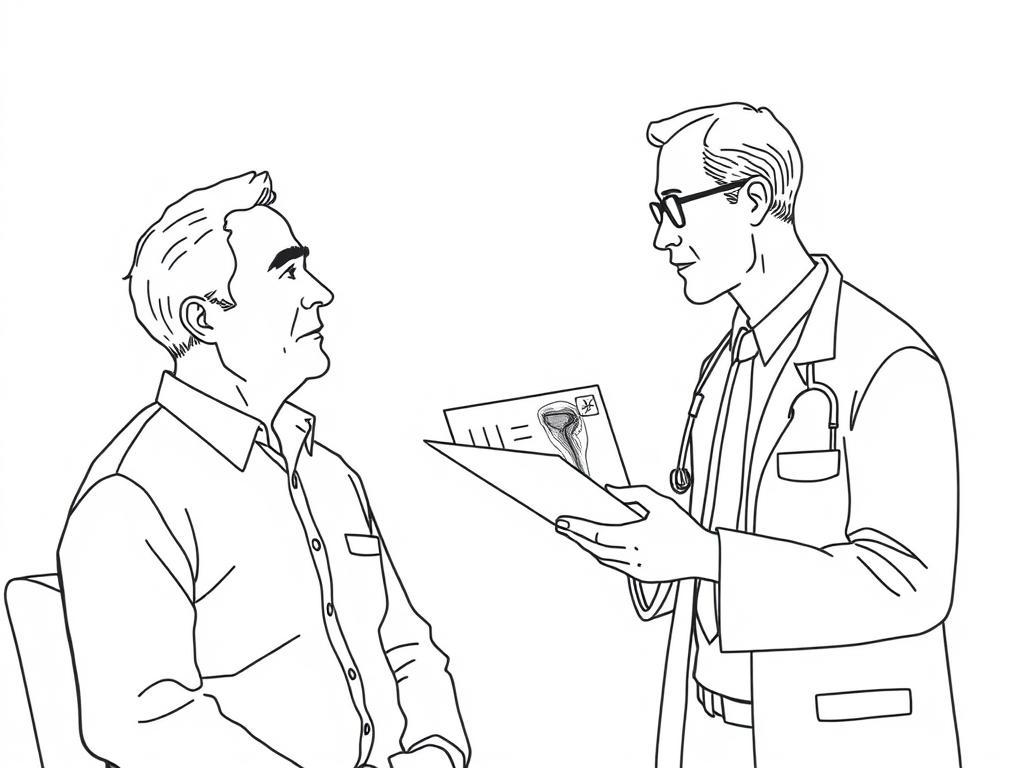Peyronie’s disease affects approximately 1-9% of men worldwide, causing penile curvature, pain, and sexual dysfunction that can significantly impact quality of life. While traditional treatments range from oral medications to surgery, red light therapy (RLT) has emerged as a promising non-invasive option. This guide examines the scientific evidence behind using red light therapy for Peyronie’s disease and provides practical guidance for those considering this treatment approach.
As research continues to evolve, understanding the mechanisms, protocols, and device options becomes essential for anyone exploring this therapeutic avenue. Let’s examine what the clinical evidence tells us about this emerging treatment modality.
Understanding Peyronie’s Disease
Peyronie’s disease is a connective tissue disorder characterized by the formation of fibrous plaques or scar tissue in the tunica albuginea of the penis. This condition typically develops in two distinct phases:
Acute Phase
The initial inflammatory stage lasts approximately 6-18 months and is characterized by:
- Active inflammation and plaque formation
- Painful erections (affecting 20-70% of patients)
- Progressive penile curvature
- Unstable disease state with changing symptoms
Chronic Phase
The stable phase that follows when inflammation subsides:
- Stabilized curvature (typically no longer changing)
- Reduced or absent pain
- Calcified plaques in some cases
- Persistent erectile dysfunction in approximately 30% of men
The exact cause remains incompletely understood, but research points to microtrauma during sexual activity as a trigger in genetically predisposed individuals. This trauma initiates an abnormal wound healing response, leading to excessive collagen deposition and fibrosis. A study by El-Sakka et al. (2013) highlighted that oxidative stress and the overproduction of fibrogenic cytokines and free radicals play crucial roles in this pathological process.
Current Treatment Landscape
Conventional treatments for Peyronie’s disease include:
| Treatment Category | Examples | Effectiveness | Limitations |
| Oral Medications | Potassium para-aminobenzoate, colchicine, vitamin E | Low to moderate | Limited evidence of efficacy, potential side effects |
| Injections | Collagenase, verapamil, interferon | Moderate | Painful, requires multiple treatments, risk of complications |
| Physical Therapies | Extracorporeal shock wave therapy, traction devices | Variable | Time-intensive, inconsistent results |
| Surgery | Plication, grafting, implants | High | Invasive, risk of complications, potential penile shortening |
According to a comprehensive Cochrane review (Rosenberg et al., 2023), there is limited evidence supporting the effectiveness of most non-surgical treatments for Peyronie’s disease. This gap in effective, non-invasive options has led to increased interest in alternative approaches like red light therapy.
The Science Behind Red Light Therapy for Peyronie’s Disease
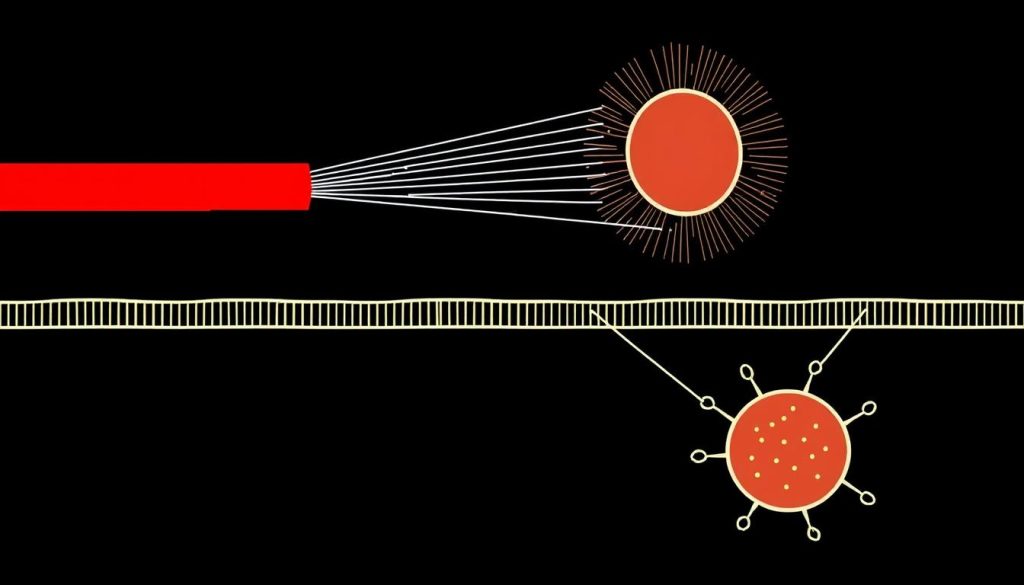
Red light therapy, also known as photobiomodulation or low-level laser therapy (LLLT), utilizes specific wavelengths of red and near-infrared light (typically 630-1064 nm) to stimulate cellular function and tissue repair. While research specifically on Peyronie’s disease is emerging, the mechanisms that make RLT effective for other fibrotic conditions suggest potential benefits.
Mechanisms of Action
Red light therapy works through several biological mechanisms that directly address the pathophysiology of Peyronie’s disease:
Anti-inflammatory Effects
Red and near-infrared light reduces inflammation by decreasing pro-inflammatory cytokines and modulating immune cell activity. This is particularly relevant during the acute inflammatory phase of Peyronie’s disease.
Fibroblast Regulation
RLT can normalize fibroblast activity, potentially reducing excessive collagen production that leads to plaque formation while promoting more organized collagen alignment.
Increased Circulation
Light therapy stimulates nitric oxide release, improving blood flow to affected tissues and enhancing the delivery of nutrients and removal of waste products.
Clinical Evidence for Fibrotic Conditions
While direct studies on red light therapy for Peyronie’s disease are limited, research on similar fibrotic conditions provides valuable insights:
- Scar Tissue Reduction: A 2018 study by Brassolatti et al. demonstrated that photobiomodulation therapy significantly reduced collagen density and improved organization in fibrotic tissue.
- Wound Healing: Research by Chung et al. (2012) showed that red light therapy can accelerate wound healing and reduce scarring by modulating inflammatory processes.
- Laser Therapy for Peyronie’s: Allameh et al. (2019) conducted a randomized control double-blind pilot study using laser therapy for Peyronie’s disease, finding moderate efficacy in reducing pain and penile curvature in the short term.
A particularly relevant study by Paulis et al. (2022) reported two cases of complete plaque regression in patients with Peyronie’s disease after multimodal treatment that included antioxidants and other therapies. This suggests that approaches targeting oxidative stress—a mechanism also addressed by red light therapy—may be beneficial.
“A laser carries light energy to injured cells to stimulate the local release of nitric oxide (a vasodilator agent), to improve cellular energy by stimulating mitochondria to accelerate ATP production, to increase metabolic activity and cell growth, improving wound healing, and to reduce acute and chronic pain. All of these laser characteristics can reverse abnormal fibrotic reaction in PD pathophysiology.”
Optimal Wavelengths for Peyronie’s Disease
Based on the current understanding of photobiomodulation, certain wavelengths appear particularly promising for addressing the pathophysiology of Peyronie’s disease:
| Wavelength | Penetration Depth | Primary Benefits for Peyronie’s |
| 630-633 nm (Red) | 2-3 mm | Superficial anti-inflammatory effects, improved microcirculation |
| 660 nm (Red) | 3-5 mm | Enhanced fibroblast activity regulation, collagen organization |
| 810-830 nm (Near-Infrared) | 5-30 mm | Deep tissue penetration, nitric oxide release, improved blood flow |
| 850 nm (Near-Infrared) | 20-40 mm | Deep tissue repair, reduced inflammation, enhanced mitochondrial function |
| 1064 nm (Near-Infrared) | 30-50 mm | Deepest penetration, potential to reach calcified plaques |
Devices that offer multiple wavelengths may provide more comprehensive treatment by addressing different aspects of the condition. The Total Spectrum Compact with its seven-wavelength mix (630/633, 660, 808/810, 830, 850, 1064 nm, plus 465 nm blue) offers a versatile approach that can target both superficial and deeper tissues involved in Peyronie’s disease. You can compare leading panels side-by-side here to find the optimal wavelength combination for your specific needs.
Red Light Therapy Treatment Protocols for Peyronie’s Disease
Recommended Treatment Parameters
Based on existing research on photobiomodulation for fibrotic conditions and the limited studies on Peyronie’s disease, the following treatment parameters may be considered:
| Parameter | Recommendation | Rationale |
| Session Duration | 5-15 minutes per area | Allows sufficient energy delivery without risk of overexposure |
| Treatment Frequency | 3-5 sessions per week | Consistent treatment supports ongoing cellular response |
| Distance from Device | 6-12 inches (15-30 cm) | Balances energy delivery with coverage area |
| Total Treatment Period | 12-24 weeks minimum | Fibrotic tissue remodeling requires sustained intervention |
| Energy Density | 4-60 J/cm² | Effective range for tissue repair and anti-inflammatory effects |
Important Note: Treatment protocols should be adjusted based on individual response and disease phase. The acute inflammatory phase may benefit from more frequent sessions focused on anti-inflammatory effects, while the chronic phase may require longer-term treatment targeting tissue remodeling.
Treatment Positioning and Technique
Proper positioning is crucial for effective treatment of Peyronie’s disease with red light therapy:
Direct Application
- Position the device to directly target the affected area of the penis
- Ensure the penis is in a flaccid state for consistent treatment
- Consider multiple angles to ensure comprehensive coverage of the plaque
- Maintain the recommended distance from the device
Complementary Areas
- Include treatment of the lower abdomen to improve blood flow to the genital region
- Consider treating the perineum area to enhance circulation
- For devices with sufficient coverage area, a single position may treat multiple regions simultaneously
Combining with Other Therapies
Research suggests that multimodal approaches may be more effective for Peyronie’s disease. Consider combining red light therapy with:
- Antioxidant Supplements: Paulis et al. (2022) reported complete plaque regression with a protocol including oral antioxidants like propolis, bilberry, and vitamin E.
- Gentle Stretching: Careful stretching exercises may complement RLT by improving tissue remodeling.
- Pentoxifylline: This medication has shown some efficacy in improving blood flow and reducing inflammation when used alongside other therapies.
- Vacuum Devices: These may help maintain penile length and potentially enhance the effects of RLT by improving blood flow.
“This study showed that multimodal combined antioxidant treatment had satisfactory results. However, to accomplish this, we deem it essential to have a correct ultrasound assessment that is performed with a sufficiently advanced machine by an operator with extensive experience in the field.”
It’s important to note that any combined approach should be discussed with a healthcare provider, particularly one experienced in treating Peyronie’s disease.
Selecting the Right Red Light Therapy Device for Peyronie’s Disease
When selecting a red light therapy device for Peyronie’s disease, several factors should be considered to ensure effective treatment:
Key Device Specifications
Wavelength Range
Look for devices that offer both red (630-660 nm) and near-infrared (810-1064 nm) wavelengths for comprehensive treatment of both superficial and deeper tissues.
Power Density
Effective devices should deliver at least 30-100 mW/cm² at the treatment distance to ensure sufficient energy reaches the target tissue.
Treatment Area
Consider the size of the device relative to the area requiring treatment. Larger panels may be more convenient but smaller, targeted devices can also be effective.
Comparing Device Types
| Device Type | Advantages | Limitations | Ideal For |
| Handheld Units | Portable, affordable, precise targeting | Small treatment area, longer treatment times, arm fatigue | Spot treatment, travel, budget constraints |
| Small Panels (12″×12″ or similar) | Targeted treatment, moderate coverage, manageable size | May require repositioning for complete coverage | Focused treatment of specific areas |
| Medium Panels (30″×12″ or similar) | Good coverage, efficient treatment times, versatile | Higher cost, less portable | Regular home use, treating multiple body areas |
| Large Panels (48″+ length) | Comprehensive coverage, shortest treatment times | Highest cost, requires dedicated space | Serious long-term use, treating multiple conditions |
Recommended Features for Peyronie’s Disease Treatment
- Multiple wavelengths (red and near-infrared)
- Sufficient power density (30+ mW/cm²)
- Low EMF emissions
- Timer function
- Stable, adjustable positioning
Essential Features
- Single wavelength devices
- Undisclosed power specifications
- High flicker rates (>1%)
- Excessive heat output
- Poor warranty coverage
Features to Avoid
Leading Device Options
Several manufacturers offer quality devices suitable for Peyronie’s disease treatment:
RLT Home
The Total Spectrum Max (48″×12″, 360 LEDs) offers comprehensive coverage with seven clinically-validated wavelengths (630/633, 660, 808/810, 830, 850, 1064 nm, plus 465 nm blue). Its high LED density shortens treatment time for targeted applications, and the zero measurable EMF at treatment distance enhances safety for sensitive areas.
PlatinumLED
Known for exceptional build quality and durability, PlatinumLED offers devices with good power output. Their BioMax series provides multiple wavelengths, though with fewer options than some competitors.
Joovv
Joovv devices feature excellent app integration for tracking treatment sessions, which can be helpful for maintaining a consistent protocol. Their modular design allows for expanding treatment area over time.
For those seeking a balance of coverage area and portability, the Total Spectrum Compact (30″×12″, 216 LEDs) provides an efficient mid-size option with the same seven-wavelength mix as larger models, making it suitable for targeted treatment of Peyronie’s disease. You can compare leading panels side-by-side here to evaluate specific features relevant to your treatment needs.
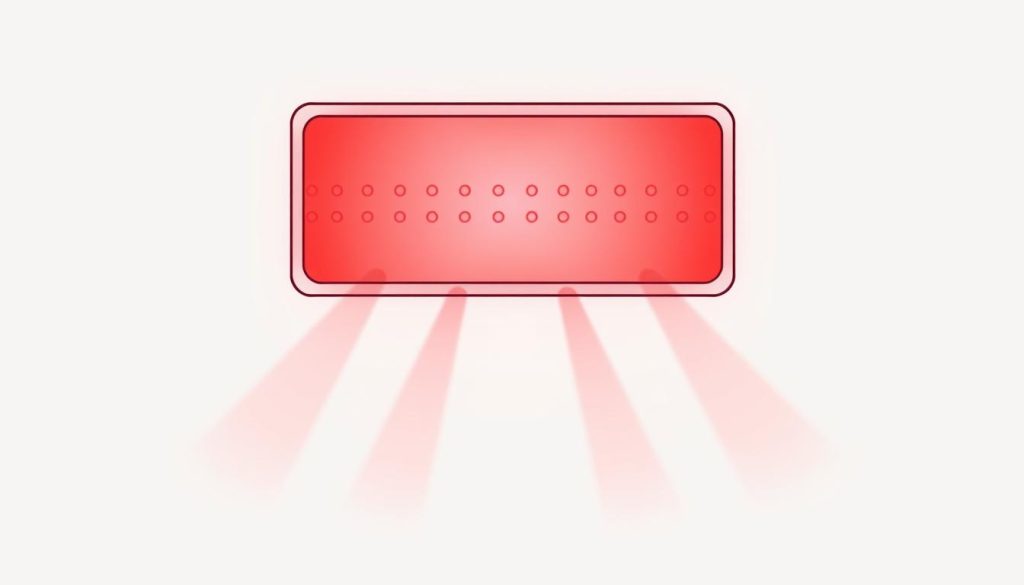
Expected Results and Treatment Timeline
When using red light therapy for Peyronie’s disease, it’s important to set realistic expectations regarding results and timeline. Based on studies of photobiomodulation for fibrotic conditions and limited research on Peyronie’s specifically:
Timeline for Potential Improvements
| Timeframe | Potential Changes | What to Monitor |
| 1-4 Weeks | Reduction in pain during erections, initial anti-inflammatory effects | Pain levels, erection comfort |
| 1-3 Months | Continued pain reduction, possible softening of plaque, improved erectile function | Plaque consistency, erectile function, pain levels |
| 3-6 Months | Potential reduction in plaque size, possible improvement in curvature | Plaque size, degree of curvature |
| 6+ Months | Continued tissue remodeling, stabilization of improvements | Overall sexual function, maintenance of improvements |
“Considering the long period of time (over 3 years) required for disease regression in our patients, we must keep in mind that chronic inflammatory diseases are inherently very long lasting, and therefore an adequate period of treatment is needed to stop progression of the disease and gradually have a reabsorption of plaque.”
Monitoring Progress
To effectively track improvements, consider these monitoring approaches:
Self-Assessment
- Keep a journal of pain levels (0-10 scale)
- Track changes in erectile function
- Note any changes in plaque feel or size
- Document any changes in curvature angle
- Record sexual function and satisfaction
Professional Assessment
- Regular follow-ups with a urologist
- Penile ultrasound to measure plaque size
- Objective measurement of curvature angle
- Validated questionnaires (IIEF, PDQ)
- Assessment of erectile function
Realistic Expectations: While some studies show promising results, complete resolution of Peyronie’s disease with red light therapy alone is not guaranteed. The goal is typically to reduce symptoms, slow progression, and improve quality of life. Individual results may vary based on disease severity, duration, and individual factors.
Factors Affecting Treatment Response
Several factors may influence how well an individual responds to red light therapy for Peyronie’s disease:
- Disease Duration: Earlier intervention typically yields better results
- Plaque Characteristics: Calcified plaques may be more resistant to treatment
- Treatment Consistency: Regular, sustained treatment is essential
- Device Quality: Higher-quality devices with appropriate specifications tend to produce better results
- Complementary Approaches: Combining RLT with other therapies may enhance outcomes
- Individual Factors: Age, overall health, and comorbidities can affect response
Safety Considerations and Precautions
Red light therapy is generally considered safe with minimal side effects when used properly. However, when treating Peyronie’s disease, specific considerations should be kept in mind:
General Safety Guidelines
- Eye Protection: Always use appropriate eye protection when using devices that emit bright light, especially those with blue light components
- Hydration: Ensure adequate hydration before and after treatment sessions
- Temperature: Monitor skin temperature during treatment; discontinue if excessive heating occurs
- Treatment Duration: Follow recommended treatment times; more is not necessarily better
- Device Placement: Maintain the recommended distance between the device and treatment area
Specific Precautions for Peyronie’s Disease
Important: Red light therapy should be considered a complementary approach, not a replacement for medical care. Always consult with a urologist or healthcare provider experienced in treating Peyronie’s disease before beginning any treatment regimen.
When to Exercise Caution
- During the acute, painful phase with rapidly changing symptoms
- If you have photosensitivity or take photosensitizing medications
- If you have a history of skin cancer in the treatment area
- If you have active infection or inflammation unrelated to Peyronie’s
- If you have implanted medical devices in the treatment area
When to Seek Medical Advice
- If pain increases during or after treatment
- If you notice new or worsening curvature
- If erectile function deteriorates
- If skin irritation or unusual reactions occur
- If no improvement is seen after 3-6 months of consistent treatment
Potential Side Effects
While red light therapy has minimal side effects compared to many other treatments for Peyronie’s disease, some individuals may experience:
- Temporary Redness: Mild skin redness that typically resolves within hours
- Mild Warmth: A warming sensation during treatment that should not be uncomfortable
- Temporary Sensitivity: Increased sensitivity in the treated area
- Eye Strain: If proper eye protection is not used
These effects are generally mild and transient. If you experience persistent or severe effects, discontinue treatment and consult a healthcare provider.
Quality devices like those from RLT Home feature built-in safety measures such as zero measurable EMF at treatment distance and minimal flicker, which can be particularly important when treating sensitive areas. The 60-day risk-free trial period also allows users to evaluate the treatment’s suitability for their specific condition without long-term commitment.
Integrating Red Light Therapy with Medical Care
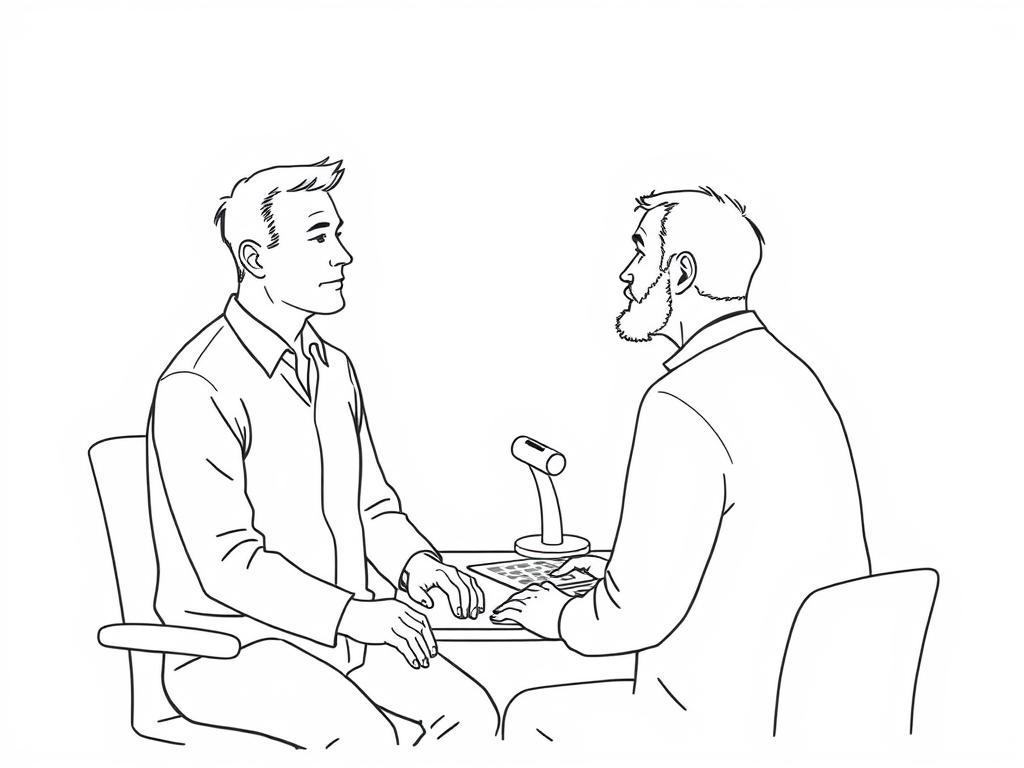
For optimal outcomes, red light therapy should be integrated into a comprehensive treatment approach under medical supervision. Here’s how to effectively combine RLT with conventional medical care:
Working with Healthcare Providers
Before Starting Treatment
- Obtain a proper diagnosis from a urologist
- Discuss red light therapy as a potential complementary approach
- Share research and information about the therapy
- Establish baseline measurements of plaque size and curvature
- Document initial symptoms and erectile function
During Treatment
- Maintain regular follow-up appointments
- Keep detailed records of your treatment protocol
- Report any changes (positive or negative) to your provider
- Discuss adjustments to treatment parameters as needed
- Continue any prescribed medical treatments unless advised otherwise
Complementary Medical Approaches
Research suggests that multimodal approaches may be more effective for Peyronie’s disease. Consider discussing these complementary treatments with your healthcare provider:
| Complementary Approach | Potential Benefits | Considerations with RLT |
| Oral Antioxidants | Reduced oxidative stress, enhanced tissue repair | May enhance RLT effects; no known interactions |
| Penile Traction Therapy | Mechanical remodeling of scar tissue, reduced curvature | Can be used at different times of day from RLT |
| Intralesional Injections | Direct treatment of plaque, reduced size and pain | RLT may be used between injection sessions |
| Vacuum Devices | Improved blood flow, maintained penile length | May enhance circulation before/after RLT sessions |
“Although this study was conducted on a limited number of patients, it showed that our multimodal combined antioxidant treatment made it possible to achieve very satisfactory results.”
When to Consider Other Interventions
While red light therapy may be beneficial, it’s important to recognize when additional or alternative interventions might be necessary:
- Severe Curvature: Curvature greater than 60 degrees may require more aggressive intervention
- Calcified Plaques: Heavily calcified plaques may be less responsive to light therapy alone
- Significant Erectile Dysfunction: If ED is a major component, specific treatments for this aspect may be needed
- Lack of Response: If no improvement is seen after 6 months of consistent RLT, reevaluation is warranted
- Progressive Worsening: If symptoms worsen despite treatment, immediate medical consultation is essential
Medical Guidance: The National Institute of Diabetes and Digestive and Kidney Diseases (NIDDK) provides comprehensive information about Peyronie’s disease and treatment options. This resource can help facilitate informed discussions with healthcare providers about integrating red light therapy into your treatment plan.
Case Studies and Research Updates
Emerging Research on Light Therapy for Peyronie’s Disease
While direct studies on red light therapy for Peyronie’s disease are limited, several related studies provide valuable insights:
Allameh et al. (2019)
This randomized controlled double-blind pilot study evaluated laser therapy for Peyronie’s disease, finding that the combination of laser therapy and intralesional verapamil injections showed greater improvement in pain reduction and penile curvature at 3 months compared to verapamil alone. However, these improvements were not maintained at 9-month follow-up, suggesting the need for ongoing treatment.
Paulis et al. (2022)
This case report documented complete plaque regression in two patients with Peyronie’s disease after multimodal treatment with antioxidants, topical diclofenac gel, and periodic pentoxifylline injections over a period exceeding 3 years. While not specifically using red light therapy, this study demonstrates the potential for non-surgical approaches to achieve significant tissue remodeling over time.
Candebat Montero et al. (2008)
This study evaluated the results of treating Peyronie’s disease with interferon and HeNe laser therapy. The combined approach showed improvement in symptoms (84.7%), decrease in fibrous plaque size (90.6%), and decrease in penile curvature (87.5%) after 28 weeks of treatment, suggesting laser therapy may be a valuable component of multimodal treatment.
Case Study: Integrating Red Light Therapy into Multimodal Treatment
Note: The following case study is a composite based on published research and clinical observations. Individual results may vary.
Patient Profile
Age: 52 years
Condition: Peyronie’s disease diagnosed 8 months prior
Symptoms: 35-degree dorsal curvature, moderate pain during erections, palpable plaque, difficulty with intercourse
Previous Treatments: Oral vitamin E for 3 months with minimal improvement
Treatment Protocol
The patient began a comprehensive approach including:
- Red light therapy using a device with multiple wavelengths (660 nm and 850 nm)
- Treatment schedule: 10 minutes daily, 5 days per week
- Oral antioxidant supplements (vitamin E, coenzyme Q10)
- Gentle manual stretching exercises
Results Timeline
- 1 Month: Noticeable reduction in pain during erections (VAS score decreased from 7/10 to 4/10)
- 3 Months: Further pain reduction (VAS score 2/10), subjective feeling of softer plaque
- 6 Months: Ultrasound confirmed 30% reduction in plaque size, curvature reduced to 25 degrees, pain almost completely resolved
- 12 Months: Continued improvement with curvature reduced to 18 degrees, sexual function significantly improved
Ongoing Research and Future Directions
Several areas of research may further clarify the role of red light therapy in Peyronie’s disease treatment:
- Optimal Parameters: Studies to determine the most effective wavelengths, power densities, and treatment protocols specifically for Peyronie’s disease
- Combination Approaches: Research on how red light therapy may enhance other treatments such as intralesional injections or traction therapy
- Mechanism Studies: Further investigation into how photobiomodulation affects the specific pathophysiological processes in Peyronie’s disease
- Long-term Outcomes: Studies tracking the durability of improvements from red light therapy over extended periods
- Preventive Applications: Research on whether early intervention with red light therapy might prevent progression in newly diagnosed cases
As research continues to evolve, our understanding of how to optimize red light therapy for Peyronie’s disease will likely improve, potentially leading to more standardized and effective treatment protocols.
Frequently Asked Questions
How long does it take to see results from red light therapy for Peyronie’s disease?
Results vary significantly between individuals. Some may notice reduced pain within 1-4 weeks, but changes in plaque size and curvature typically take longer, often 3-6 months of consistent treatment. Significant tissue remodeling may require 6-12 months or longer. Peyronie’s disease is a chronic condition, and patience is essential when using non-invasive approaches like red light therapy.
Can red light therapy completely cure Peyronie’s disease?
Complete resolution of Peyronie’s disease with red light therapy alone is not guaranteed and should not be expected in all cases. While some case reports document significant improvements and even complete plaque regression with multimodal approaches that include light therapy components, most patients should expect partial improvement rather than complete resolution. The goal is typically to reduce symptoms, improve function, and enhance quality of life.
Is red light therapy safe for Peyronie’s disease?
Red light therapy is generally considered safe with minimal side effects when used properly. Unlike many other treatments for Peyronie’s disease, it is non-invasive and typically well-tolerated. However, it should be used according to proper guidelines, and individuals should consult with healthcare providers before beginning treatment, especially if they have other medical conditions or are taking medications that might cause photosensitivity.
Which wavelengths are best for treating Peyronie’s disease?
A combination of red (630-660 nm) and near-infrared (810-850 nm) wavelengths appears most beneficial for Peyronie’s disease. Red wavelengths target superficial tissues and provide anti-inflammatory effects, while near-infrared wavelengths penetrate deeper to reach the tunica albuginea where plaques form. Devices offering multiple wavelengths, such as those with 660 nm, 830 nm, and 850 nm, may provide more comprehensive treatment by addressing different aspects of the condition.
Can I use red light therapy if I’m also receiving other treatments for Peyronie’s disease?
Red light therapy can often be used alongside other treatments for Peyronie’s disease, and some research suggests multimodal approaches may be more effective. However, it’s essential to discuss this with your healthcare provider, as timing and interactions between treatments should be considered. For example, red light therapy might be particularly complementary to oral antioxidants but may need to be timed appropriately relative to intralesional injections.
How often should I use red light therapy for Peyronie’s disease?
Most protocols suggest using red light therapy 3-5 times per week for 5-15 minutes per session. Daily use is generally not necessary and may not provide additional benefits. Consistency is more important than frequency—regular sessions over months are typically more effective than intensive short-term use. The exact protocol may need to be adjusted based on individual response and the specific device being used.
Additional Resources and Support
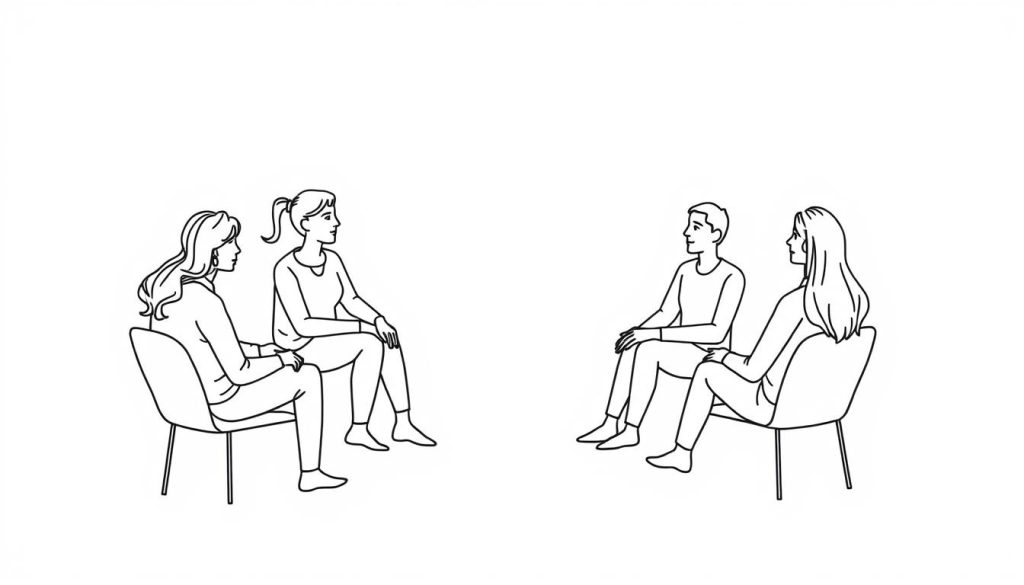
Medical Resources
- American Urological Association Guidelines on Peyronie’s Disease – Comprehensive clinical guidelines for healthcare providers and patients
- National Institute of Diabetes and Digestive and Kidney Diseases (NIDDK) – Government resource with reliable information on Peyronie’s disease
- Mayo Clinic Peyronie’s Disease Information – Patient-friendly overview of the condition and treatment options
- International Society for Sexual Medicine – Professional organization with resources on sexual health conditions including Peyronie’s disease
Patient Support Organizations
- Association of Peyronie’s Disease Advocates – Patient advocacy group providing support and information
- Men’s Health Network – Organization focused on men’s health issues including Peyronie’s disease
- Sexual Health Matters – Resources on sexual health conditions and treatments
Research and Clinical Trials
- ClinicalTrials.gov – Peyronie’s Disease Studies – Database of clinical trials related to Peyronie’s disease
- PubMed – Red Light Therapy and Fibrosis Research – Scientific publications on photobiomodulation for fibrotic conditions
Books and Educational Materials
- “Understanding Peyronie’s Disease: A Treatment Guide for Curvature of the Penis” by Laurence A. Levine
- “The Ultimate Guide to Male Sexual Health” by Dudley Seth Danoff
- “The Photobiomodulation Therapy Handbook” by James D. Carroll and Praveen Arany
Conclusion: The Future of Red Light Therapy for Peyronie’s Disease

Red light therapy represents a promising non-invasive approach for managing Peyronie’s disease, particularly when integrated into a comprehensive treatment plan. While not a guaranteed cure, the growing body of evidence suggests that photobiomodulation can address several key aspects of the condition’s pathophysiology, including inflammation, fibrosis, and impaired tissue repair.
The most effective approach appears to be consistent, long-term application using devices with appropriate specifications, particularly those offering multiple wavelengths that can target both superficial and deeper tissues. The Total Spectrum Max with its comprehensive seven-wavelength mix and high LED density offers an excellent option for those seeking efficient treatment sessions with minimal EMF exposure. You can compare leading panels side-by-side here to find the device that best matches your specific needs and circumstances.
As research continues to evolve, we can expect more refined protocols and potentially stronger evidence for the efficacy of red light therapy in treating Peyronie’s disease. For now, patients should approach this therapy with realistic expectations, patience, and ongoing communication with healthcare providers.
The journey to managing Peyronie’s disease effectively is often long and may require multiple approaches. Red light therapy offers a non-invasive option with minimal side effects that can be easily integrated into daily life, potentially improving outcomes and quality of life for those affected by this challenging condition.
Take the Next Step in Your Peyronie’s Disease Treatment Journey
Consider exploring red light therapy as part of your comprehensive approach to managing Peyronie’s disease. With RLT Home’s 60-day risk-free trial and 3-year warranty, you can evaluate this treatment option with confidence.
— David, independent RLT researcher

